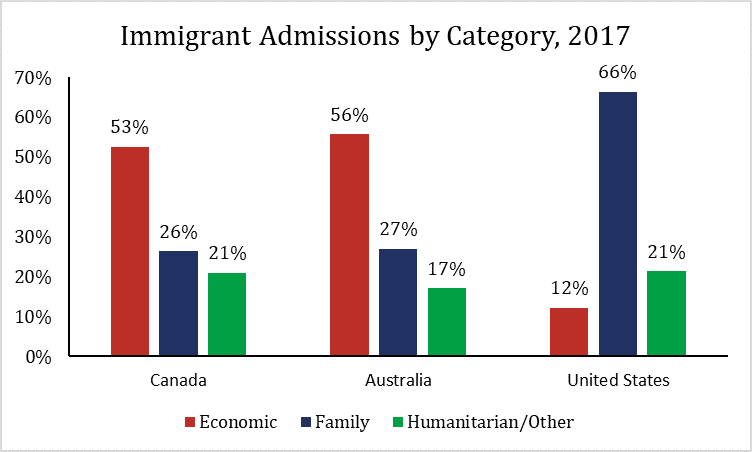The Daily Dish
May 8, 2019
Stirrings on Immigration Reform
Eakinomics: Stirrings on Immigration Reform
Illegal immigration has been a long-standing policy issue in the United States, and more recently the crisis at the southern border has been the focus of attention. But while the core system of granting visas is largely neglected, there are good reasons to think it is due for reform. So it is of interest that Republican senators met with President Trump yesterday to discuss a forthcoming White House immigration reform proposal. According to The Hill newspaper, “White House counselor Kellyanne Conway told Fox News the ‘big’ legislative package aims to reduce illegal immigration and implement a merit-based visa system that would favor workers over family members sponsored by their U.S. citizen or permanent-resident relatives.” Days earlier White House Advisor Jared Kushner said “he’s put together ‘a very detailed proposal’ that encompasses three major themes: improving border security, moving toward a so-called merit-based system and maintaining ‘our country’s humanitarian values.’”
The presumed models for such a reform are Australia and Canada, which use point-based systems to grant visas on economic merit, while the United States continues to focus on granting visas for family unification and humanitarian reasons (see chart below).
The focus on economic-based immigration seemingly gives Australia and Canada the capability to absorb a much higher number of new immigrants each year relative to population size. In 2017, new immigrants to Australia represented 0.9 percent of the population and new immigrants to Canada numbered 0.8 percent. In contrast, the United States accepted 0.3 percent. Similarly, immigrants in both Australia and Canada make up 28.2 and 21.8 percent of the entire population, respectively, compared to 13.5 percent in the United States.
Stepping back, the United States has a low fertility rate — so low that, in the absence of any immigration, the nation would age quickly and shrink in population. Thus, the entire future growth and skill of the labor force will be dictated by immigration policy decisions. It makes sense to focus on economics in making those decisions.
A White House meeting is a long way from actually accomplishing immigration reform. But it is an interesting sign of stirring in an otherwise gridlocked environment.
Fact of the Day
If President Trump raises tariffs on $200 billion of Chinese goods from the current 10 percent rate to 25 percent, it will cost American consumers an additional $28 billion.











